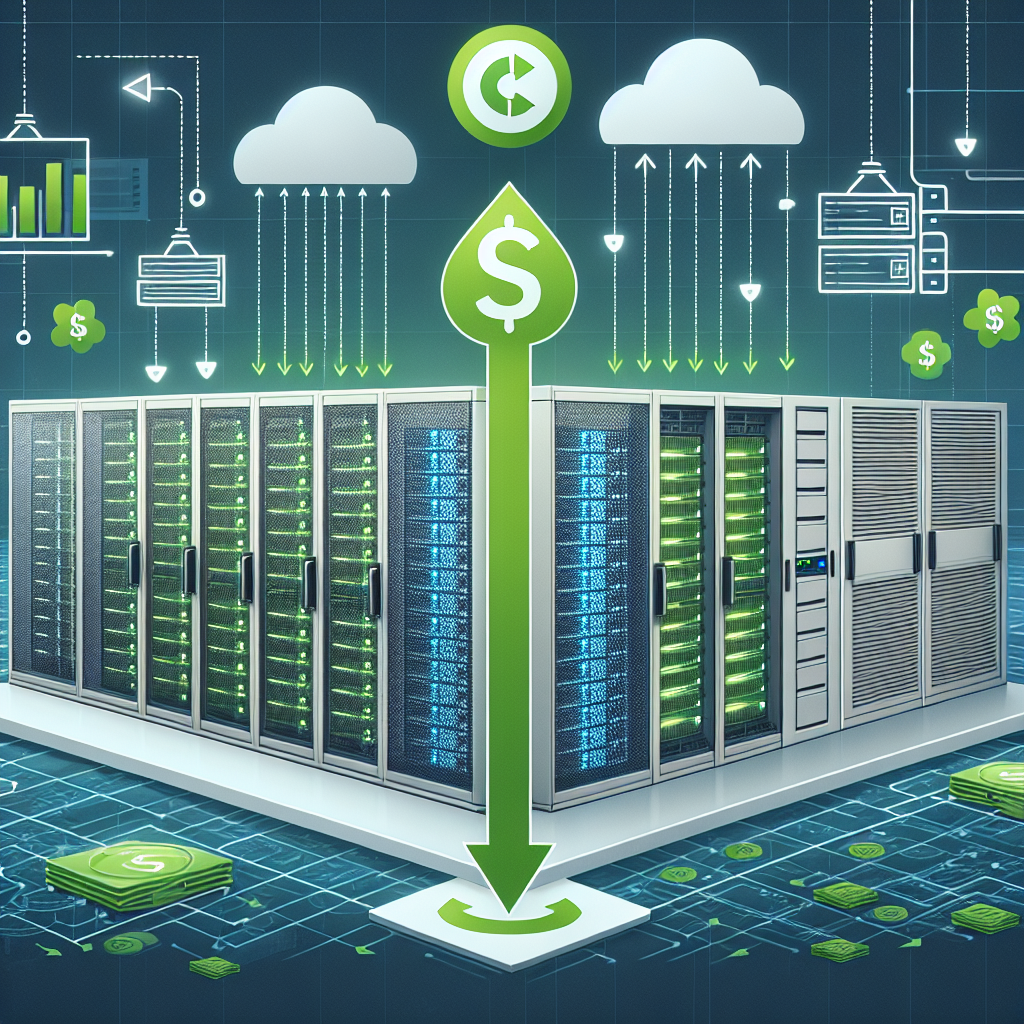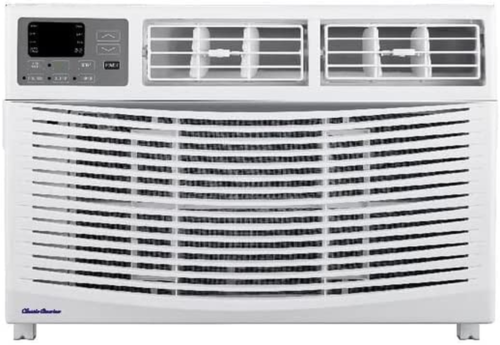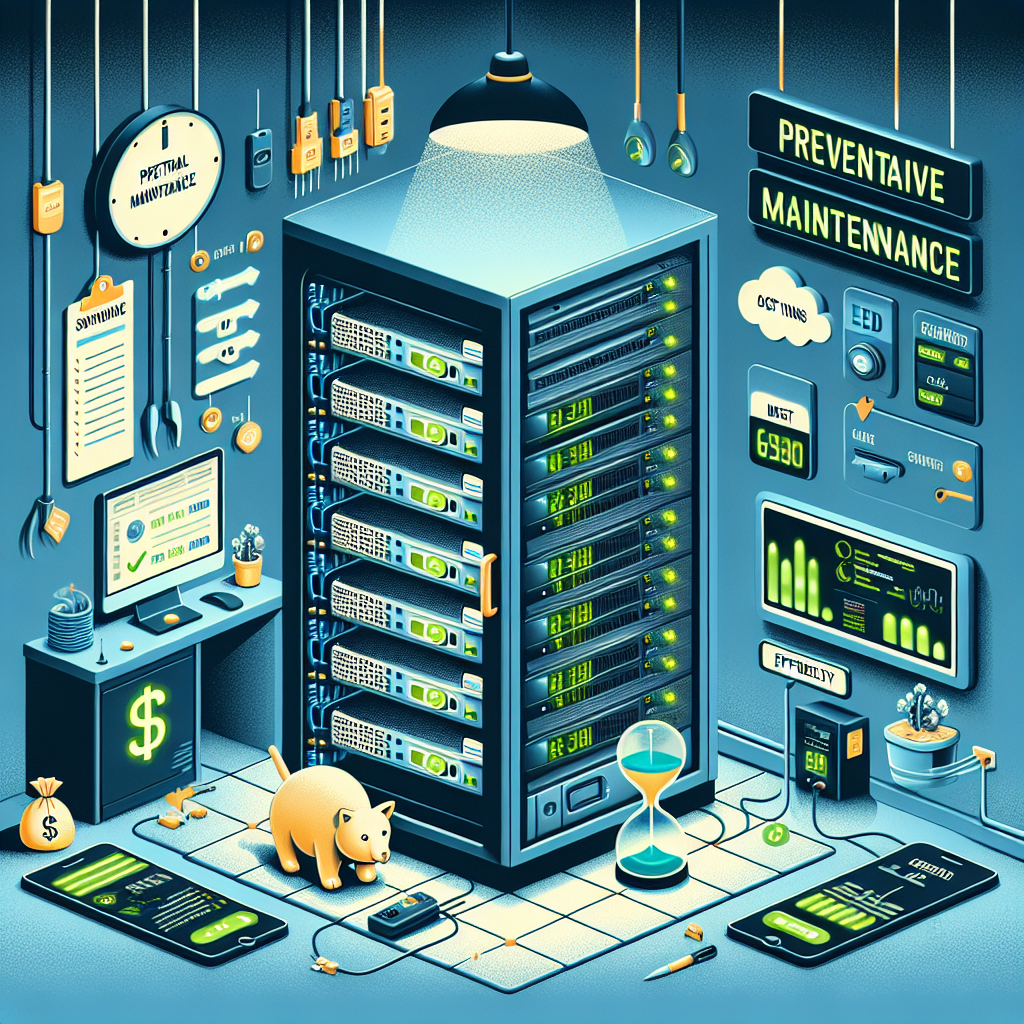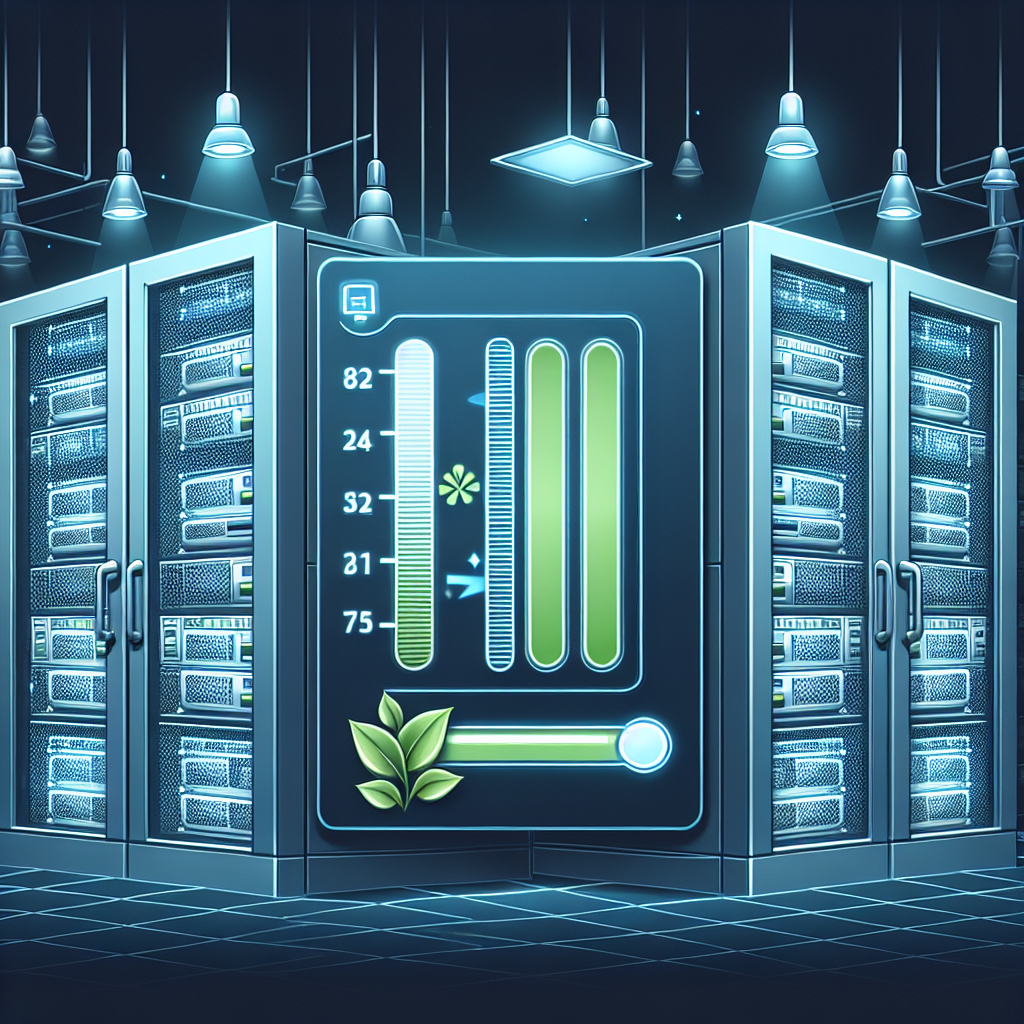Your cart is currently empty!
Tag: Savings

The Role of HVAC in Data Center Energy Efficiency and Cost Savings
Data centers play a critical role in today’s digital age, serving as the backbone of the internet and housing the servers and networking equipment that power our online activities. With the increasing demand for data storage and processing power, data centers are becoming more energy-intensive, leading to higher operational costs and environmental impact. One key component that can help improve energy efficiency and reduce costs in data centers is the HVAC system.HVAC, which stands for heating, ventilation, and air conditioning, is essential for maintaining the optimal operating conditions in data centers. These facilities generate a significant amount of heat due to the constant operation of servers and networking equipment. Without proper cooling, the heat generated can lead to equipment failure and downtime, resulting in lost productivity and revenue.
By implementing an efficient HVAC system, data centers can effectively manage the heat generated by the equipment and maintain the ideal temperature and humidity levels. This not only ensures the smooth operation of the equipment but also prolongs its lifespan, reducing the need for frequent replacements and repairs.
One of the key benefits of an efficient HVAC system in data centers is energy savings. By using energy-efficient cooling solutions such as precision air conditioning units and hot aisle/cold aisle containment systems, data centers can reduce their energy consumption and lower their operating costs. These systems are designed to deliver precise cooling to the equipment without wasting energy on unnecessary cooling of the entire facility.
In addition to energy savings, a well-designed HVAC system can also improve the overall reliability and performance of the data center. By maintaining the optimal operating conditions, the HVAC system helps prevent equipment overheating and reduces the risk of downtime due to thermal issues. This not only improves the efficiency of the data center but also enhances the overall user experience by ensuring uninterrupted access to online services.
Furthermore, a properly designed HVAC system can also contribute to environmental sustainability by reducing the carbon footprint of the data center. By using energy-efficient cooling solutions and optimizing the airflow within the facility, data centers can minimize their impact on the environment and contribute to the global efforts to combat climate change.
In conclusion, the role of HVAC in data center energy efficiency and cost savings cannot be overstated. By investing in an efficient cooling system, data centers can improve the reliability, performance, and sustainability of their operations while reducing their energy consumption and operating costs. As the demand for data storage and processing continues to grow, it is essential for data centers to prioritize energy efficiency and sustainability in order to meet the challenges of the digital age.

Optimizing Data Center IT Operations for Performance and Cost Savings
Data centers are the backbone of modern businesses, supporting critical IT operations and storing vast amounts of data. However, with the increasing demand for data storage and processing power, data center costs are also on the rise. In order to keep up with these demands while also controlling costs, organizations must optimize their data center IT operations for performance and cost savings.One key aspect of optimizing data center IT operations is ensuring efficient use of resources. This includes consolidating servers, virtualizing storage and networking, and implementing energy-efficient practices. By consolidating servers and virtualizing storage and networking, organizations can reduce the number of physical servers needed, leading to lower energy consumption and reduced cooling costs. Additionally, implementing energy-efficient practices such as using energy-efficient hardware and optimizing cooling systems can further reduce energy costs.
Another important factor in optimizing data center IT operations is monitoring and managing performance. By using monitoring tools to track the performance of servers, storage, and networking equipment, organizations can identify bottlenecks and optimize resource usage. This can help prevent performance issues and ensure that data center operations run smoothly. Additionally, organizations can use performance data to make informed decisions about resource allocation and capacity planning, ensuring that resources are used efficiently and cost-effectively.
Cost savings can also be achieved through automation and optimization of data center IT operations. By automating routine tasks such as provisioning and monitoring, organizations can reduce the time and resources required to manage the data center. This can lead to cost savings by reducing the need for manual intervention and streamlining operations. Additionally, organizations can optimize their data center operations by implementing best practices for resource management, such as workload balancing and optimization, to ensure that resources are used efficiently and cost-effectively.
In conclusion, optimizing data center IT operations for performance and cost savings is essential for organizations looking to stay competitive in today’s fast-paced business environment. By consolidating servers, virtualizing storage and networking, monitoring performance, and automating routine tasks, organizations can achieve cost savings while ensuring that their data center operations run smoothly and efficiently. By implementing these best practices, organizations can maximize the value of their data center investments and stay ahead of the competition.

The Benefits of Predictive Maintenance in Data Centers: Cost Savings and Improved Performance
Data centers are the backbone of modern technology, providing the infrastructure necessary to store, process, and transmit vast amounts of data. With the increasing reliance on data centers for everything from cloud computing to social media, it is crucial that these facilities are operating at peak performance to ensure seamless operations.One of the key strategies for maintaining the efficiency and reliability of data centers is predictive maintenance. Predictive maintenance utilizes data analytics and machine learning algorithms to forecast when equipment is likely to fail, allowing for proactive maintenance to be performed before a costly and disruptive breakdown occurs.
One of the primary benefits of predictive maintenance in data centers is cost savings. By identifying and addressing potential issues before they lead to a breakdown, data center operators can avoid the exorbitant costs associated with downtime, equipment replacement, and emergency repairs. In fact, studies have shown that predictive maintenance can reduce maintenance costs by up to 30% and downtime by as much as 75%.
In addition to cost savings, predictive maintenance also leads to improved performance in data centers. By monitoring the health and performance of equipment in real-time, operators can optimize maintenance schedules, identify inefficiencies, and make data-driven decisions to enhance the overall efficiency of the facility. This results in increased uptime, reduced energy consumption, and improved reliability, ultimately leading to a better user experience for customers.
Furthermore, predictive maintenance can also extend the lifespan of equipment in data centers. By detecting and addressing potential issues early on, operators can prevent wear and tear on critical components, leading to longer-lasting and more reliable equipment. This not only reduces the frequency of equipment replacements but also minimizes the risk of catastrophic failures that can result in data loss and downtime.
Overall, the benefits of predictive maintenance in data centers are clear: cost savings, improved performance, and extended equipment lifespan. By harnessing the power of data analytics and machine learning, data center operators can proactively manage their facilities, ensuring they are operating at peak efficiency and reliability. As the demand for data centers continues to grow, predictive maintenance will be a critical tool in ensuring the long-term success of these vital facilities.

Wifi Enabled, Alexa Ready, Energy Savings – Window Mounted Air Conditioners (120

Wifi Enabled, Alexa Ready, Energy Savings – Window Mounted Air Conditioners (120
Price : 475.99
Ends on : N/A
View on eBay
Are you looking for a convenient and energy-efficient way to cool your space this summer? Look no further than our Wifi-enabled, Alexa-ready window-mounted air conditioners!With the ability to connect to your home’s Wifi network, you can easily control your air conditioner from anywhere using your smartphone or smart home device. Forgot to turn it off before leaving the house? No problem – just pull out your phone and adjust the settings on the go.
Our air conditioners are also Alexa-ready, meaning you can simply use voice commands to control the temperature and settings. Just say “Alexa, set the living room AC to 72 degrees” and let your virtual assistant take care of the rest.
Not only are our air conditioners convenient to use, but they also help you save on energy costs. With programmable settings and energy-saving features, you can ensure that your space stays cool without wasting unnecessary power.
Don’t sweat the heat this summer – invest in a Wifi-enabled, Alexa-ready, energy-saving window-mounted air conditioner today!
#Wifi #Enabled #Alexa #Ready #Energy #Savings #Window #Mounted #Air #Conditioners
Driving Sustainability and Cost Savings with DCIM
Data Center Infrastructure Management (DCIM) is a powerful tool that can help organizations drive sustainability and cost savings in their data centers. With the increasing demand for data storage and processing, data centers are consuming more energy than ever before. In fact, data centers are estimated to consume about 3% of the world’s electricity, and this number is expected to continue rising.By implementing DCIM, organizations can monitor and manage their data center infrastructure more efficiently, leading to significant cost savings and reduced environmental impact. Here are some ways in which DCIM can help drive sustainability and cost savings:
1. Energy Efficiency Monitoring: DCIM provides real-time monitoring of energy usage in the data center, allowing organizations to identify areas of high energy consumption and implement measures to reduce it. By optimizing cooling systems, server utilization, and power distribution, organizations can significantly reduce their energy bills and carbon footprint.
2. Capacity Planning: DCIM helps organizations plan and optimize their data center capacity, ensuring that resources are used efficiently and effectively. By identifying underutilized servers and equipment, organizations can consolidate resources, reduce energy consumption, and save on operational costs.
3. Predictive Maintenance: DCIM can help organizations predict and prevent equipment failures before they occur, reducing downtime and maintenance costs. By monitoring equipment health and performance, organizations can schedule maintenance activities proactively, avoiding costly emergency repairs and minimizing disruptions to operations.
4. Asset Management: DCIM provides a comprehensive view of all assets in the data center, allowing organizations to track inventory, monitor equipment lifespan, and optimize asset utilization. By identifying redundant or outdated equipment, organizations can streamline their infrastructure, reduce maintenance costs, and improve overall efficiency.
5. Environmental Monitoring: DCIM can monitor environmental conditions in the data center, such as temperature, humidity, and air quality, to ensure optimal operating conditions. By maintaining the right environmental conditions, organizations can prolong equipment lifespan, reduce energy consumption, and lower cooling costs.
Overall, DCIM is a valuable tool for organizations looking to drive sustainability and cost savings in their data centers. By implementing DCIM solutions, organizations can optimize their infrastructure, reduce energy consumption, and improve operational efficiency, ultimately leading to a more sustainable and cost-effective data center environment.

Achieving Cost Savings and ROI through Effective Data Center Lifecycle Management
In today’s digital age, data centers play a critical role in supporting the operations of businesses across various industries. As the demand for data storage and processing continues to grow, organizations are constantly looking for ways to optimize their data center operations and achieve cost savings.One key strategy for achieving cost savings and maximizing return on investment (ROI) in data centers is through effective lifecycle management. This involves managing the data center infrastructure throughout its entire lifecycle, from planning and design to operation and decommissioning.
By implementing a comprehensive lifecycle management strategy, organizations can optimize the performance and efficiency of their data centers, reduce operational costs, and extend the lifespan of their infrastructure. Here are some key ways in which effective data center lifecycle management can help organizations achieve cost savings and ROI:
1. Efficient resource utilization: By carefully planning and designing the data center infrastructure, organizations can ensure that resources such as power, cooling, and space are used efficiently. This can help reduce operating costs and improve overall performance.
2. Regular maintenance and upgrades: Regular maintenance and upgrades of data center equipment can help prevent downtime and prolong the lifespan of the infrastructure. By investing in proactive maintenance and timely upgrades, organizations can avoid costly repairs and replacements in the long run.
3. Energy efficiency: Energy consumption is a major cost factor in data center operations. By implementing energy-efficient technologies and practices, organizations can reduce their electricity bills and lower their carbon footprint. This can result in significant cost savings over time.
4. Decommissioning outdated equipment: As technology evolves, older data center equipment may become obsolete or inefficient. By decommissioning outdated equipment in a timely manner, organizations can free up space, reduce maintenance costs, and improve overall performance.
5. Data center consolidation: Consolidating data center operations into fewer facilities can help organizations reduce operating costs and streamline management. By consolidating resources and optimizing utilization, organizations can achieve cost savings and improve ROI.
Overall, effective data center lifecycle management is essential for optimizing performance, reducing costs, and maximizing ROI. By implementing a comprehensive lifecycle management strategy, organizations can achieve significant cost savings and ensure the long-term success of their data center operations.

Maximizing Efficiency and Cost Savings Through Vendor Management in Data Centers
Data centers play a crucial role in today’s digital economy, serving as the backbone of countless businesses and organizations that rely on technology to operate efficiently. With the increasing amount of data being generated and the growing demand for storage and processing power, data centers are faced with the challenge of maximizing efficiency and cost savings to remain competitive in the market.One key aspect of achieving efficiency and cost savings in data centers is through effective vendor management. By carefully selecting and managing vendors who provide essential services and products, data center operators can optimize their operations and reduce costs. Here are some strategies for maximizing efficiency and cost savings through vendor management in data centers:
1. Vendor selection: The first step in effective vendor management is to carefully select vendors who can meet the data center’s specific needs and requirements. This involves conducting thorough research, evaluating vendor capabilities, and comparing prices and service offerings. By choosing vendors that offer high-quality products and services at competitive prices, data centers can ensure they are getting the best value for their investment.
2. Vendor relationships: Building strong relationships with vendors is essential for maximizing efficiency and cost savings. By establishing open communication channels, setting clear expectations, and fostering collaboration, data center operators can work closely with vendors to address any issues or concerns that may arise. This can help prevent delays, reduce downtime, and ensure that vendors deliver on their promises.
3. Performance monitoring: Monitoring vendor performance is crucial for ensuring that they are meeting the data center’s expectations and delivering on their commitments. By tracking key performance indicators, such as service levels, response times, and quality of products, data center operators can identify areas for improvement and hold vendors accountable for their performance. This can help data centers identify opportunities for cost savings and efficiency improvements.
4. Contract management: Effective contract management is essential for maximizing efficiency and cost savings in vendor relationships. By negotiating favorable contract terms, such as pricing, service levels, and delivery schedules, data center operators can ensure they are getting the best value for their investment. Regularly reviewing and updating contracts can also help data centers adapt to changing business needs and market conditions.
5. Vendor consolidation: Consolidating vendors can help data centers streamline their operations, reduce complexity, and achieve cost savings. By working with a smaller number of trusted vendors who can provide a wide range of products and services, data centers can simplify their vendor management processes and leverage economies of scale. This can help data centers negotiate better pricing, reduce administrative costs, and increase efficiency.
In conclusion, maximizing efficiency and cost savings through vendor management is essential for data centers to remain competitive in today’s fast-paced digital economy. By carefully selecting vendors, building strong relationships, monitoring performance, managing contracts, and consolidating vendors, data centers can optimize their operations and reduce costs. By implementing these strategies, data centers can achieve greater efficiency, improve performance, and drive business success.

The Role of Preventative Maintenance in Data Center Efficiency and Cost Savings
Data centers are the backbone of modern technology, housing the servers and equipment that store and process vast amounts of data. To ensure that data centers operate efficiently and effectively, preventative maintenance is essential. By implementing a proactive maintenance strategy, data center operators can minimize downtime, extend the lifespan of equipment, and ultimately save on costs.Preventative maintenance involves regular inspections, testing, and servicing of equipment to identify and address potential issues before they escalate into major problems. This proactive approach allows data center operators to detect issues early on, preventing costly breakdowns and downtime that can impact operations and customer satisfaction.
One of the key benefits of preventative maintenance in data centers is increased efficiency. Regularly servicing and cleaning equipment can help optimize performance and reduce energy consumption. By keeping servers and cooling systems well-maintained, data center operators can ensure that equipment operates at peak efficiency, leading to lower energy costs and a smaller environmental footprint.
Furthermore, preventative maintenance can extend the lifespan of equipment, reducing the need for costly repairs or replacements. By identifying and addressing issues early on, data center operators can prevent equipment failures and prolong the life of critical components. This not only saves money in the long run but also reduces the risk of unplanned downtime that can disrupt operations.
In addition to efficiency and cost savings, preventative maintenance also plays a crucial role in ensuring data center reliability and uptime. By proactively monitoring and maintaining equipment, data center operators can minimize the risk of unexpected failures and outages. This is especially important for mission-critical applications and services that rely on uninterrupted access to data.
Overall, preventative maintenance is a vital component of data center management, contributing to improved efficiency, cost savings, and reliability. By investing in regular maintenance and upkeep of equipment, data center operators can maximize performance, reduce downtime, and ultimately provide a more reliable and sustainable infrastructure for their customers.

The Benefits of Implementing DCIM in Your Data Center: Cost Savings, Energy Efficiency, and More
Data centers are a critical component of modern business operations, housing the servers, storage devices, and networking equipment that keep organizations running smoothly. However, managing a data center can be a complex and costly endeavor. That’s where Data Center Infrastructure Management (DCIM) comes in.DCIM is a software solution that provides a comprehensive view of a data center’s infrastructure, allowing IT professionals to monitor and manage all aspects of their facility in real-time. By implementing DCIM, organizations can realize a number of benefits, including cost savings, energy efficiency, and improved overall performance.
One of the primary benefits of implementing DCIM is cost savings. By providing a detailed view of a data center’s infrastructure, DCIM allows IT professionals to identify areas where resources are being underutilized or wasted. This can lead to significant cost savings by optimizing equipment usage, reducing energy consumption, and eliminating unnecessary expenses.
In addition to cost savings, DCIM can also help improve energy efficiency in a data center. By monitoring power usage in real-time, IT professionals can identify opportunities to reduce energy consumption and lower electricity bills. This not only saves money, but also helps organizations meet their sustainability goals and reduce their carbon footprint.
Furthermore, implementing DCIM can lead to improved overall performance in a data center. By providing a centralized view of all infrastructure components, DCIM allows IT professionals to quickly identify and address any issues that may arise. This can help prevent downtime, improve system reliability, and ensure that the data center is operating at peak efficiency.
Overall, implementing DCIM in a data center can provide a wide range of benefits, including cost savings, energy efficiency, and improved performance. By investing in a DCIM solution, organizations can streamline their operations, reduce expenses, and ensure that their data center is running at its full potential.

Driving Cost Savings and Performance with Data Center Operational Efficiency
In today’s digital age, data centers play a crucial role in storing and processing vast amounts of information for businesses of all sizes. However, managing a data center can be a costly endeavor, with expenses for energy, cooling, maintenance, and equipment adding up quickly. In order to maximize efficiency and drive cost savings, it is essential for data center managers to focus on operational efficiency.One of the key ways to improve operational efficiency in a data center is through the use of data analytics. By collecting and analyzing data on energy usage, equipment performance, and other key metrics, data center managers can identify areas where improvements can be made. For example, by monitoring temperature and humidity levels, managers can optimize cooling systems to reduce energy consumption and lower costs.
Another important aspect of operational efficiency is regular maintenance and monitoring of equipment. By conducting routine inspections and addressing any issues promptly, data center managers can prevent costly downtime and extend the lifespan of their equipment. Additionally, implementing automated monitoring and alert systems can help identify potential problems before they lead to major outages.
In addition to cost savings, operational efficiency can also have a positive impact on performance. By optimizing data center operations, managers can ensure that applications and services run smoothly and efficiently. This can lead to improved customer satisfaction, increased productivity, and ultimately, a competitive advantage in the marketplace.
Overall, driving cost savings and performance with data center operational efficiency requires a proactive approach and a commitment to continuous improvement. By leveraging data analytics, implementing best practices for maintenance and monitoring, and prioritizing efficiency, data center managers can achieve significant savings and enhance the performance of their operations. In today’s fast-paced business environment, operational efficiency is more important than ever, and data centers that prioritize efficiency will be better positioned to succeed in the long run.
